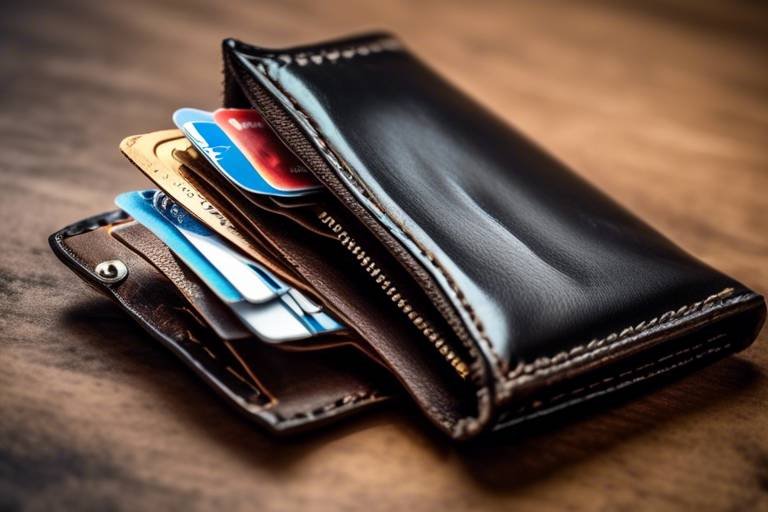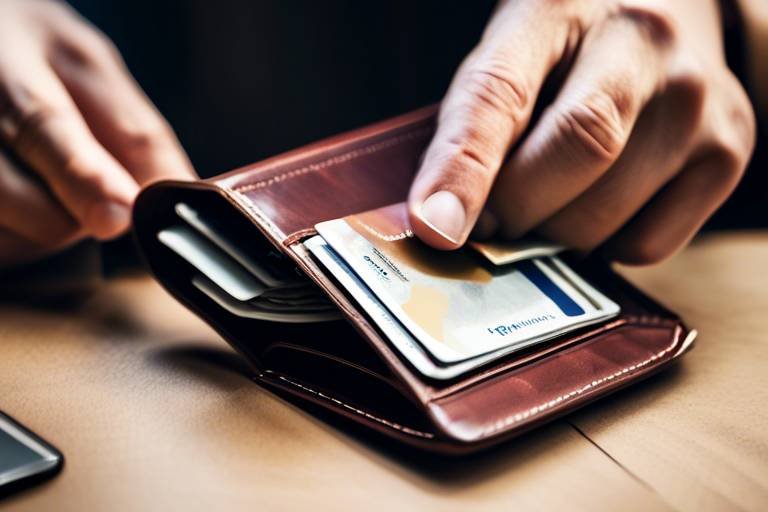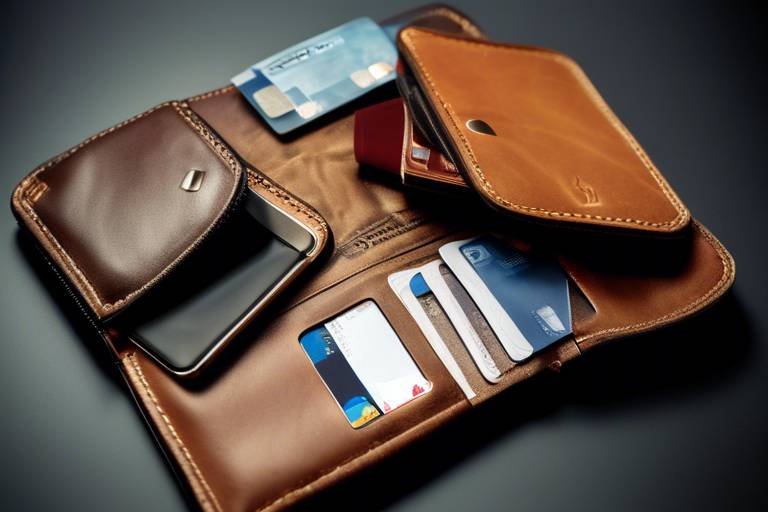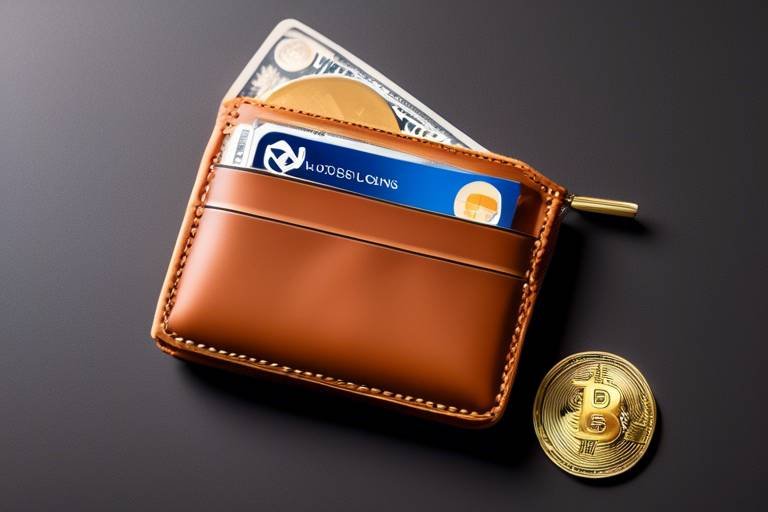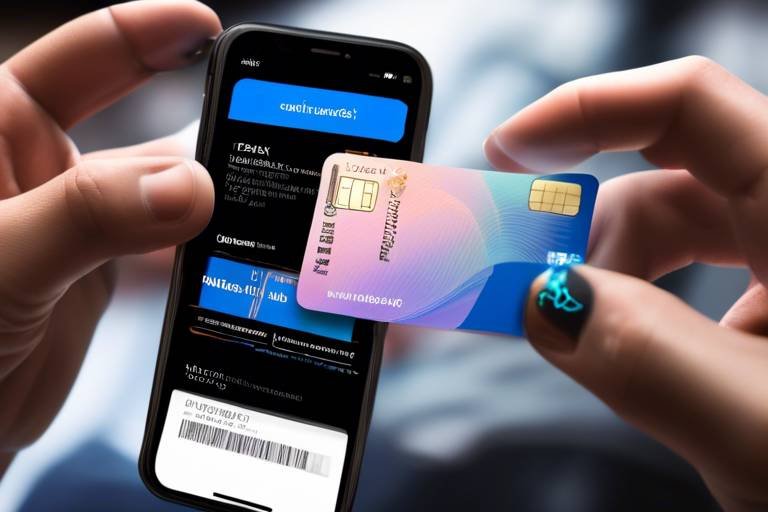The Importance of Wallet Documentation and Resources
In today’s digital age, where transactions occur at the speed of light and financial management is often just a click away, the importance of wallet documentation cannot be overstated. Imagine trying to navigate a bustling city without a map—confusing, right? Well, your digital wallet is no different. Proper documentation serves as your roadmap, guiding you through the maze of transactions, asset management, and security protocols. Whether you are a seasoned investor or a casual user, maintaining comprehensive records can make all the difference in your financial journey.
Wallet documentation encompasses various aspects, from transaction history to security measures and asset tracking. It’s not just about keeping numbers; it’s about understanding your financial landscape. By diligently recording each transaction, you gain valuable insights into your spending habits, which can help you make informed decisions in the future. Moreover, in the unfortunate event of a security breach or device failure, having well-organized documentation can be your lifesaver. You wouldn’t want to lose access to your hard-earned assets simply because you didn’t keep track of your wallet credentials.
With the rise of digital currencies and online transactions, the landscape of financial management has transformed dramatically. Users are now presented with a plethora of options, from hot wallets that offer instant access to cold wallets that prioritize security. Each type of wallet comes with its own set of features, benefits, and risks, making it crucial for users to understand their choices. This article aims to shed light on the significance of wallet documentation and the resources available to enhance user experience, security, and financial management.
Furthermore, as we delve deeper into the various types of wallets, we’ll explore the importance of backing up your wallet documentation. After all, losing access to your digital assets can be as devastating as losing your physical wallet. So, buckle up as we navigate through the world of digital wallets, and discover how you can safeguard your financial future with proper documentation and resources.
Wallet documentation is essential for tracking transactions, managing assets, and ensuring security. This section delves into the types of documentation users should maintain for effective wallet management.
There are various types of digital wallets, each serving different purposes. This section outlines the main categories of wallets, including hot wallets, cold wallets, and hardware wallets.
Hot wallets are connected to the internet, offering convenience for frequent transactions. However, they come with increased security risks, which we will discuss in this section.
Hot wallets provide easy access and quick transactions, making them ideal for everyday use. This subsection highlights their advantages and situations where they are most effective.
Despite their convenience, hot wallets are susceptible to hacking and phishing attacks. This subsection examines the potential risks associated with using hot wallets.
Cold wallets, or offline wallets, provide enhanced security for long-term asset storage. This section covers their features, benefits, and best practices for usage.
Backing up wallet documentation is crucial for ensuring access to funds in case of device loss or failure. This section discusses effective backup strategies and recovery options.
There are several methods for backing up wallet documentation, including cloud storage and physical copies. This subsection explores the pros and cons of each backup method.
In the event of a wallet loss, recovery options are vital. This section outlines the steps users can take to restore access to their wallets and funds.
- What is wallet documentation? Wallet documentation refers to the records and information related to your digital wallet, including transaction history, security keys, and backup details.
- Why is wallet documentation important? It helps in tracking your transactions, managing your assets efficiently, and ensuring security against potential breaches.
- What are the different types of wallets? The main types of wallets include hot wallets, cold wallets, and hardware wallets, each serving unique purposes and levels of security.
- How can I back up my wallet documentation? You can back up your documentation using cloud storage solutions or by keeping physical copies in a secure location.
- What should I do if I lose access to my wallet? Follow recovery procedures specific to your wallet type, which may include using recovery phrases or contacting customer support.

Understanding Wallet Documentation
When it comes to managing your digital assets, wallet documentation is not just a nice-to-have; it's a necessity. Think of it as the roadmap to your financial journey in the digital world. Without proper documentation, navigating through transactions and maintaining security can be as tricky as driving without a map. Wallet documentation encompasses various records that help you track transactions, manage your assets, and ensure your financial security. So, what exactly should you keep track of?
First off, it's essential to maintain a detailed transaction history. This includes keeping records of incoming and outgoing transactions, which can help you monitor your spending habits and identify any unauthorized activities. In addition to transaction history, you should also document your wallet addresses. Each digital wallet has unique addresses for receiving funds, and knowing these can prevent confusion and errors when making transactions.
Moreover, security is paramount in the digital realm. Keeping a record of your security measures—such as two-factor authentication settings, recovery phrases, and backup locations—can save you from potential disasters. Imagine losing access to your wallet without any backup plan; it would be like losing the keys to your house without a spare! Therefore, it's wise to jot down these crucial details in a secure location.
Furthermore, wallet documentation can also include information about the types of wallets you are using. Understanding whether you are using a hot wallet for daily transactions or a cold wallet for long-term storage can influence how you manage your assets. By categorizing your wallets, you can develop a tailored strategy for each, ensuring that you maximize security while maintaining accessibility.
In summary, wallet documentation is your safety net in the vast and sometimes unpredictable world of digital finance. By keeping a comprehensive record of your transactions, wallet addresses, security measures, and wallet types, you equip yourself with the knowledge needed to navigate this digital landscape confidently. So, don’t leave your financial fate to chance; start documenting today!

Types of Wallets
When it comes to managing your digital assets, understanding the various types of wallets is crucial. Each wallet serves a unique purpose, and knowing the differences can help you choose the right one for your needs. Digital wallets can be broadly categorized into three main types: hot wallets, cold wallets, and hardware wallets. Each type has its own set of features, benefits, and risks that can significantly impact your overall experience and security.
Hot wallets are like the bustling cafes of the digital currency world. They are always connected to the internet, allowing for quick and easy access to your funds. This makes them ideal for those who frequently engage in transactions or trading. However, just like a busy cafe, they can attract unwanted attention. The convenience of hot wallets comes with increased security risks, making them more vulnerable to hacking and phishing attacks.
On the other hand, cold wallets resemble a safe deposit box at a bank. These wallets are not connected to the internet, providing a secure environment for storing your assets long-term. Cold wallets are perfect for individuals who want to keep their cryptocurrencies safe from online threats. They are less convenient for day-to-day transactions but offer peace of mind for those looking to hold their assets over time.
Then we have hardware wallets, which can be thought of as a high-tech version of a traditional wallet. These physical devices store your private keys offline, combining the best of both worlds—security and accessibility. Hardware wallets are particularly popular among serious investors who prioritize security without sacrificing ease of use. They allow you to interact with your digital assets while keeping them safely stored away from online threats.
In summary, choosing the right wallet depends on your personal needs and how you plan to use your digital assets. Whether you opt for the convenience of a hot wallet, the security of a cold wallet, or the balance offered by a hardware wallet, understanding these options can help you manage your finances more effectively. Below is a quick comparison of the three types of wallets:
| Type of Wallet | Connection | Security Level | Best For |
|---|---|---|---|
| Hot Wallet | Online | Low to Medium | Frequent Transactions |
| Cold Wallet | Offline | High | Long-term Storage |
| Hardware Wallet | Offline | High | Security-Conscious Users |
Ultimately, the choice of wallet should align with your financial strategy and risk tolerance. By understanding the characteristics of each type, you can make an informed decision that suits your digital asset management needs.
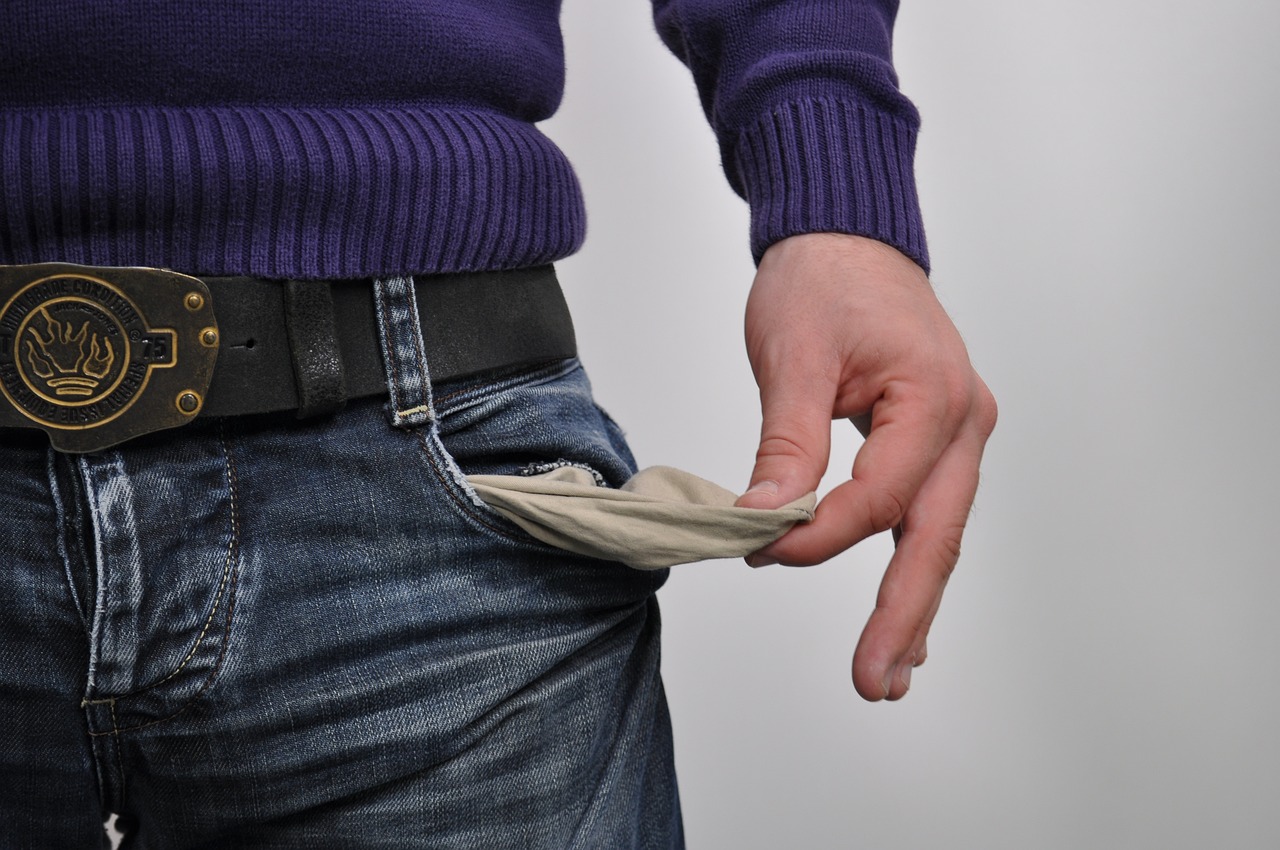
Hot Wallets
Hot wallets are a popular choice among digital currency users, primarily because they are convenient and offer quick access to your digital assets. Imagine having a wallet that you can whip out at any moment, ready for transactions—this is the essence of hot wallets. These wallets are connected to the internet, which means you can easily send and receive cryptocurrencies with just a few clicks. However, with great convenience comes great responsibility. Users must be aware that this connectivity also exposes hot wallets to various security risks.
When it comes to using hot wallets, the benefits are hard to ignore. They are particularly advantageous for those who engage in frequent trading or need to make quick purchases. The ease of access allows users to manage their funds on-the-go, making hot wallets an excellent option for everyday transactions. For example, if you’re at a café and want to pay for your coffee using Bitcoin, a hot wallet lets you do that instantly—no need to worry about transferring funds from a more secure, but less accessible, cold wallet. However, it's crucial to remember that while hot wallets are user-friendly, they require diligent security measures.
Despite their appeal, hot wallets come with their own set of risks. The most significant threat is the possibility of hacking or phishing attacks. Cybercriminals are always on the lookout for vulnerabilities, and the internet-connected nature of hot wallets makes them prime targets. Users should be aware of the following risks:
- Hacking: Since these wallets are online, they can be compromised if not properly secured.
- Phishing: Users may fall victim to scams that trick them into revealing their wallet credentials.
- Malware: Malicious software can infiltrate devices and steal wallet information.
To mitigate these risks, it’s essential to implement robust security practices. For instance, always use two-factor authentication, keep your software updated, and be cautious of suspicious links or emails. In essence, while hot wallets are incredibly useful for their speed and accessibility, users must remain vigilant to protect their assets.
In summary, hot wallets serve as a fantastic tool for those who value convenience and quick access to their digital currencies. However, the trade-off is the increased risk of security breaches. By understanding both the benefits and the potential dangers, users can make informed decisions about how to manage their digital assets effectively.
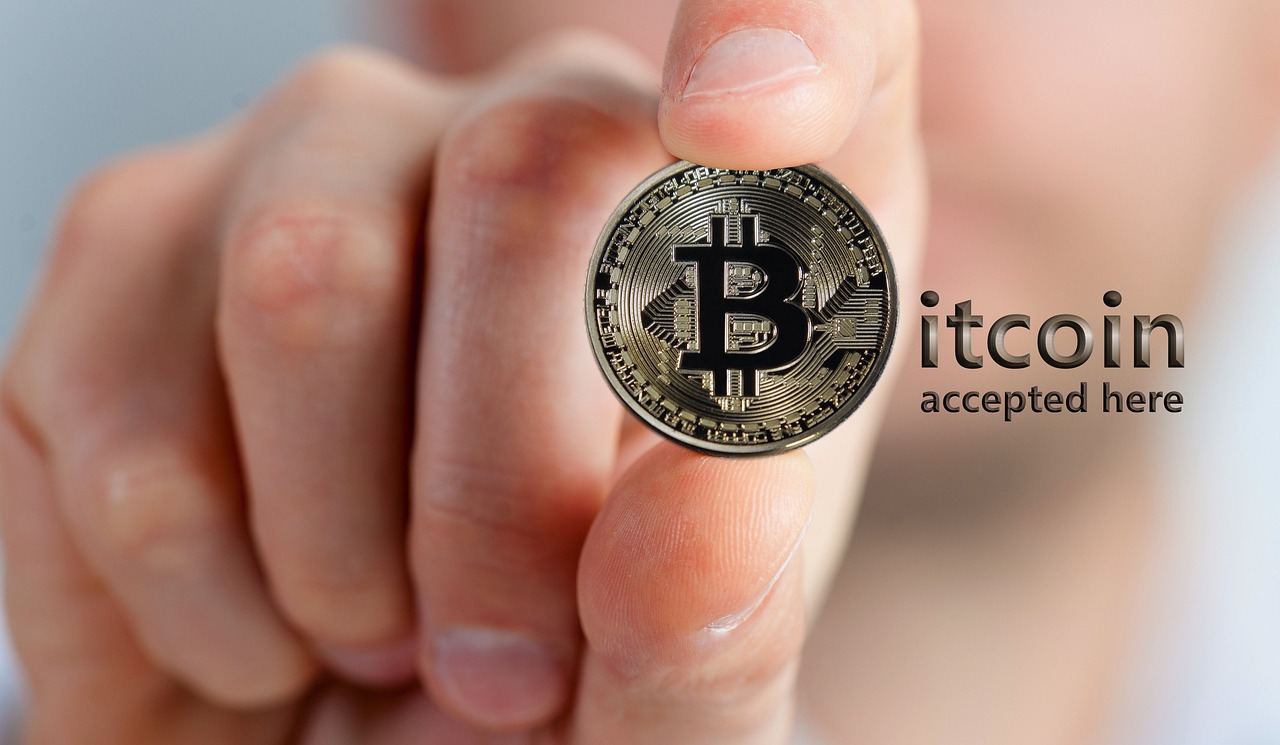
Benefits of Hot Wallets
Hot wallets are like the bustling cafes of the digital currency world—they're vibrant, lively, and perfect for quick transactions. One of the primary benefits of using hot wallets is their convenience. Imagine needing to send some cryptocurrency to a friend for a quick lunch; with a hot wallet, you can do this in just a few taps on your smartphone. This ease of access makes hot wallets ideal for those who engage in frequent transactions, whether it's buying coffee, trading stocks, or managing your crypto portfolio.
Moreover, hot wallets often come equipped with user-friendly interfaces that make them accessible even for beginners. You don't need to be a tech wizard to navigate through your digital assets. Many hot wallets also offer features like instant notifications for transactions, keeping you informed about your spending and balances in real-time. This is particularly useful for users who want to keep a close eye on their finances without constantly logging in to check their accounts.
Another significant advantage is the ability to integrate with various platforms and services. Hot wallets can easily connect with exchanges, allowing for quick trading opportunities. For instance, if you spot a promising investment, you can swiftly transfer funds and capitalize on that opportunity without delay. This seamless integration can be a game-changer for those looking to maximize their investment potential.
In addition, many hot wallets support multiple cryptocurrencies. This means you can manage different assets all in one place, eliminating the need for multiple wallets. This centralization simplifies your financial management, making it easier to track your portfolio's performance. You can think of it as having a single dashboard for all your investments, which saves time and reduces the complexity of handling various assets.
Lastly, hot wallets often provide customer support that can be invaluable, especially for those who are new to the crypto space. If you encounter any issues or have questions, having access to a support team can help you navigate challenges more effectively. This support can give users peace of mind, knowing that assistance is just a message away.
In summary, hot wallets offer a blend of convenience, user-friendliness, and integration capabilities that make them a popular choice for everyday transactions. While they do come with certain risks, the benefits they provide for active users far outweigh the downsides when proper security measures are taken. So, if you're looking for a way to manage your digital assets with ease and efficiency, a hot wallet might just be the right fit for you.
- What is a hot wallet? A hot wallet is a type of digital wallet that is connected to the internet, making it easy to access and use for transactions.
- Are hot wallets safe? While hot wallets are convenient, they are more vulnerable to security risks compared to cold wallets. It's essential to use strong passwords and enable two-factor authentication.
- Can I store multiple cryptocurrencies in a hot wallet? Yes, many hot wallets support multiple cryptocurrencies, allowing you to manage different assets in one place.
- What should I do if I lose access to my hot wallet? Most hot wallets have recovery options, such as seed phrases or backup codes, that you can use to regain access to your funds.
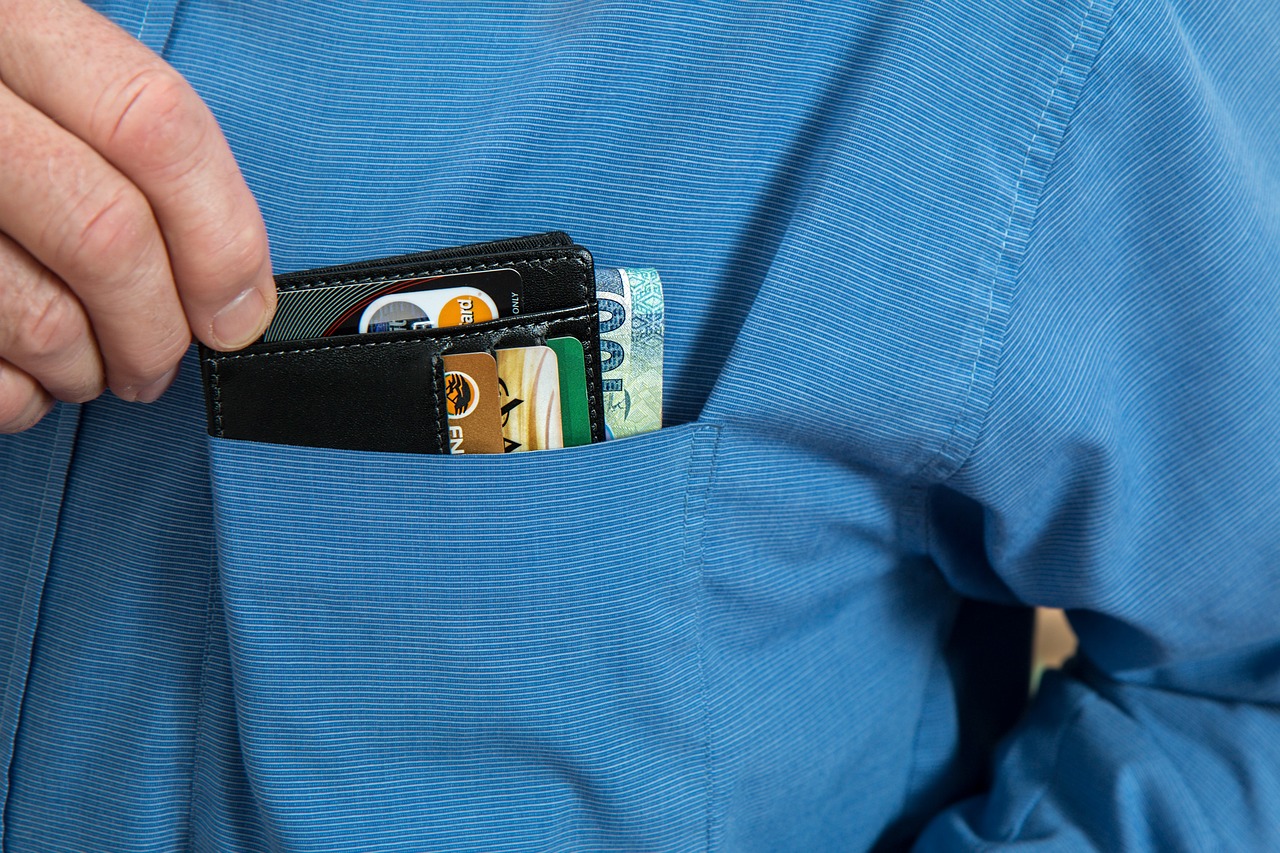
Risks of Hot Wallets
While hot wallets offer unparalleled convenience for everyday transactions, they come with a set of significant risks that users must be acutely aware of. The very nature of being connected to the internet makes these wallets a prime target for cybercriminals. Imagine leaving your front door wide open, inviting anyone to waltz in and take what they please. That's essentially what using a hot wallet can feel like if proper security measures aren't in place.
One of the most prevalent threats is hacking. Cyber attackers are constantly on the lookout for vulnerabilities in hot wallets, and once they find a way in, they can easily drain your funds. Additionally, there are phishing attacks, which trick users into providing their wallet credentials. These scams can be incredibly convincing, often masquerading as legitimate communications from wallet providers. It's akin to receiving a fake email from your bank asking for your account details; it’s all about deception.
Moreover, hot wallets are susceptible to malware. If your device gets infected, hackers can gain access to your wallet without you even realizing it. This is particularly concerning for users who might download apps or software from unverified sources. Just like you wouldn’t invite a stranger into your home, you should be cautious about what you install on your devices.
Another risk involves data breaches. If the service provider of your hot wallet suffers a breach, your wallet information could be compromised. It’s essential to choose reputable providers with strong security measures in place. Always do your homework before trusting a wallet service, as some may not prioritize user security.
In summary, while hot wallets are fantastic for quick access and transactions, they are not without their dangers. Users should adopt a proactive approach to security by:
- Enabling two-factor authentication (2FA)
- Regularly updating software
- Using strong, unique passwords
- Being vigilant against phishing attempts
By being aware of these risks and taking necessary precautions, users can enjoy the benefits of hot wallets while minimizing potential threats to their digital assets.
What is a hot wallet?
A hot wallet is a type of digital wallet that is connected to the internet, allowing for quick access and transactions. They are ideal for users who frequently buy or sell cryptocurrencies.
Are hot wallets safe?
While hot wallets are convenient, they are more vulnerable to hacking and phishing attacks compared to cold wallets. Users should implement strong security measures to protect their assets.
How can I secure my hot wallet?
To secure your hot wallet, enable two-factor authentication, use strong passwords, and be cautious of phishing attempts. Regularly updating your software can also enhance security.
What should I do if I suspect my wallet has been compromised?
If you suspect your wallet has been compromised, immediately transfer your funds to a secure wallet and change your passwords. Contact your wallet provider for further assistance.
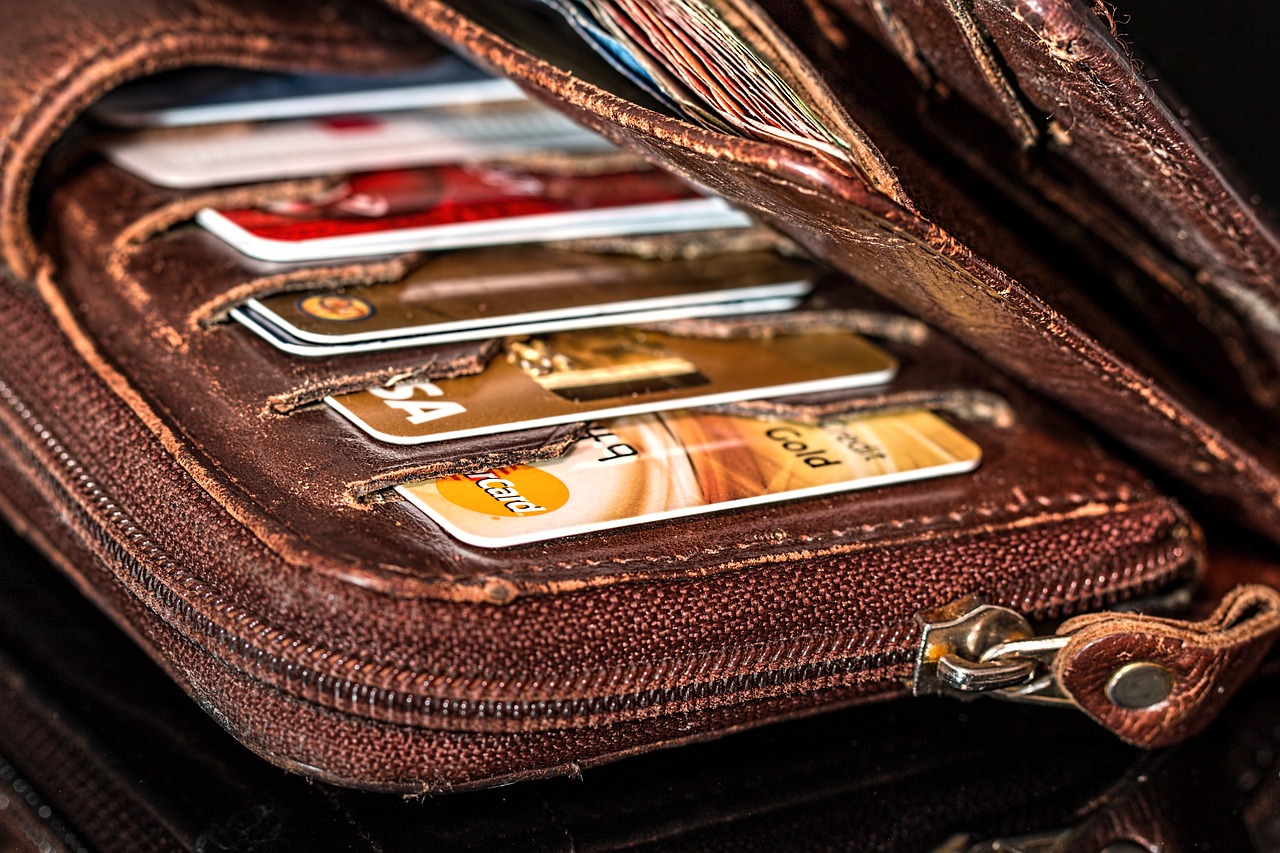
Cold Wallets
Cold wallets, often referred to as offline wallets, are a crucial component in the realm of digital asset management. Unlike their hot counterparts, cold wallets are not connected to the internet, which significantly reduces the risk of hacking and unauthorized access. Imagine storing your valuables in a safe at home instead of leaving them out on your kitchen table; this analogy perfectly illustrates the security advantage of cold wallets. They are ideal for individuals who prioritize the long-term storage of their cryptocurrencies or digital assets, as they provide a fortified barrier against online threats.
One of the standout features of cold wallets is their ability to store private keys offline. Private keys are like the keys to your digital treasure chest; if someone gets hold of them, they can access your funds without your permission. By keeping these keys offline, cold wallets ensure that even if your computer or smartphone is compromised, your assets remain safe. This makes them particularly appealing to investors who hold significant amounts of cryptocurrency and want to protect their investments from the ever-evolving landscape of cyber threats.
Cold wallets come in various forms, including hardware wallets and paper wallets. Hardware wallets are physical devices that store your private keys securely, often resembling USB drives. They can be plugged into your computer only when needed, making them a convenient yet secure option. On the other hand, paper wallets involve printing your private keys and public addresses on a piece of paper. While this method is incredibly secure from online threats, it comes with its own set of risks, such as physical damage or loss. Regardless of the type, the key takeaway is that cold wallets provide a robust solution for safeguarding your digital assets.
To maximize the effectiveness of cold wallets, users should adhere to best practices. For instance, always ensure that the software used to create and manage cold wallets is up-to-date and sourced from reputable providers. Additionally, when creating a paper wallet, it's essential to do so in a secure and private environment to prevent any unauthorized access. Regularly checking the integrity of your hardware wallet and keeping backups of your recovery phrases can also bolster your security posture. Ultimately, cold wallets serve as an essential tool in the arsenal of anyone serious about protecting their digital wealth.

Importance of Backup and Recovery
When it comes to digital wallets, the importance of backup and recovery cannot be overstated. Imagine losing your wallet, not the physical one you carry around, but the digital version that holds your hard-earned assets. It’s a nightmare scenario, isn’t it? Without proper backup strategies in place, you could find yourself locked out of your funds, unable to access them when you need them the most. This is why understanding how to effectively backup your wallet documentation is crucial for every user.
Backing up your wallet documentation is like having an insurance policy for your digital assets. It provides a safety net, ensuring that you have access to your funds even in the face of unforeseen circumstances such as device theft, hardware failure, or accidental deletion. While it may seem tedious to keep backups, the peace of mind it brings is well worth the effort. In fact, many users overlook this critical aspect of wallet management, only to regret it later when it’s too late.
So, what are the best practices for backing up your wallet documentation? There are several methods available, each with its own set of advantages and disadvantages. For instance, cloud storage offers convenience and accessibility, allowing you to access your wallet from anywhere. However, it also comes with risks, such as potential data breaches. On the other hand, keeping physical copies of your wallet documentation can be incredibly secure but poses its own challenges, such as the risk of loss or damage.
| Backup Method | Pros | Cons |
|---|---|---|
| Cloud Storage | Accessible from anywhere, easy to update | Susceptible to hacking and data breaches |
| Physical Copies | Highly secure, no internet dependency | Can be lost or damaged, not easily accessible |
| Encrypted USB Drives | Portable, secure if encrypted | Requires careful handling, potential hardware failure |
Now, let’s talk about recovery options. What happens if you do lose access to your wallet? This is where having a solid recovery plan becomes essential. Most digital wallets come equipped with recovery phrases or backup keys, which can be used to restore access to your funds. It’s crucial to store these recovery phrases securely, as anyone with access to them can take control of your wallet. A good practice is to write them down and store them in a safe place, separate from your digital devices.
In summary, the importance of backup and recovery for digital wallets cannot be emphasized enough. It’s not just about convenience; it’s about safeguarding your financial future. By implementing effective backup strategies and being aware of recovery options, you can protect your assets from the unexpected. So, take the time now to ensure that your wallet documentation is backed up and that you have a clear recovery plan in place. Your future self will thank you!
- What should I include in my wallet backup? It's important to include your recovery phrases, private keys, and any transaction records.
- How often should I back up my wallet? Regular backups are recommended, especially after significant transactions or changes to your wallet.
- What is the safest way to store my backup? Consider using a combination of cloud storage for convenience and physical copies for security.

Backup Methods
When it comes to securing your digital wallet, are your best friends. Imagine losing access to your hard-earned assets because of a device failure or accidental deletion. Sounds terrifying, right? That's why having a solid backup plan is essential. There are several effective methods you can utilize to ensure that your wallet documentation is safe and sound.
One popular method is using cloud storage. This option allows you to store your wallet information online, making it accessible from anywhere with an internet connection. Services like Google Drive, Dropbox, and OneDrive provide user-friendly interfaces and robust security measures to keep your data safe. However, while cloud storage is convenient, it does come with a few risks. If your cloud account gets hacked, your sensitive information could fall into the wrong hands. Therefore, it’s crucial to enable two-factor authentication (2FA) and choose a strong password to minimize these risks.
On the other hand, if you prefer a more physical approach, you can create hard copies of your wallet documentation. This could include printing out your private keys, recovery phrases, and transaction records. Storing these documents in a safe place, like a locked drawer or a safe, can provide peace of mind. However, physical backups also have their downsides. They can be lost, damaged, or destroyed in unforeseen circumstances like fire or flooding. So, if you opt for this method, consider keeping multiple copies in different locations.
For those who want the best of both worlds, a hybrid approach might be the way to go. This means combining both cloud storage and physical copies. By doing so, you create redundancy, ensuring that even if one method fails, you still have access to your important information. In this digital age, it’s always better to be safe than sorry!
To summarize the various backup methods, here’s a quick comparison:
| Backup Method | Advantages | Disadvantages |
|---|---|---|
| Cloud Storage | Accessible anywhere, easy to use | Risk of hacking, requires internet access |
| Physical Copies | No internet needed, highly secure if stored properly | Risk of loss or damage, less convenient |
| Hybrid Approach | Redundancy, combines benefits of both methods | More effort required to maintain |
In conclusion, the method you choose for backing up your wallet documentation ultimately depends on your personal preferences and risk tolerance. Just remember, the more layers of security you have in place, the better protected your assets will be!

Recovery Options
When it comes to digital wallets, the phrase "better safe than sorry" truly rings true. Losing access to your wallet can feel like losing a treasure chest, filled with valuable assets and memories. Thankfully, there are that can help you regain access to your funds, ensuring that your hard-earned money is not lost forever. But what do you do if your wallet goes missing, or your device malfunctions? Let's break it down.
The first step in any recovery process is to ensure that you have a solid understanding of the backup methods you employed when setting up your wallet. If you have successfully created backups, you're already on the right path. Most wallets provide a recovery phrase or seed phrase when you first set them up. This series of words acts as a key to unlocking your wallet. If you ever find yourself locked out, simply entering this phrase into a compatible wallet can restore your access. It's like having a spare key hidden under a rock—always handy when you need it!
In addition to recovery phrases, many wallets offer the option to create a backup file. This file can be stored on a secure device or in the cloud. However, it’s crucial to remember that while cloud storage offers convenience, it can also pose security risks. If you choose to go this route, ensure that your cloud account is protected with a strong password and two-factor authentication. Think of it as adding a deadbolt to your front door; it adds an extra layer of security to your valuable assets.
If you find yourself in a situation where neither your recovery phrase nor backup file is accessible, don’t panic just yet. Many wallet providers have customer support teams ready to assist you. They can guide you through the recovery process, helping you to troubleshoot and explore any available options. However, be wary of phishing attempts; always verify that you are communicating with the official support channels. Remember, if something seems too good to be true, it probably is!
Ultimately, the best recovery option is prevention. Regularly updating your backup methods and ensuring they are stored securely can save you a world of trouble down the line. Consider setting reminders to check your wallet’s backup status every few months, just like you would with a fire alarm battery. It’s a small step that can make a huge difference.
In summary, recovery options for digital wallets are not just about having a backup; it’s about being prepared. Whether it’s through recovery phrases, backup files, or customer support, knowing your options can make all the difference. Stay vigilant, keep your backups updated, and your digital treasures will remain secure.
- What is a recovery phrase?
A recovery phrase is a series of words generated by your wallet when you set it up. It allows you to restore access to your wallet if you lose your device or forget your password.
- How often should I back up my wallet?
It’s recommended to back up your wallet whenever you make significant changes, such as adding new assets or after a major update. Regular checks every few months are also advisable.
- Can I recover my wallet without a backup?
Without a backup or recovery phrase, it can be extremely difficult to regain access to your wallet. However, contacting customer support may provide some options depending on the wallet provider.
Frequently Asked Questions
- What is wallet documentation and why is it important?
Wallet documentation refers to the records and information related to your digital wallet transactions and assets. It's crucial because it helps you track your financial activities, manage your assets effectively, and enhances your security. Without proper documentation, you might lose track of your transactions, which could lead to financial mismanagement.
- What are the different types of digital wallets?
Digital wallets come in various forms, primarily categorized into hot wallets, cold wallets, and hardware wallets. Hot wallets are online and provide quick access for transactions, while cold wallets are offline, offering enhanced security for long-term storage. Hardware wallets are physical devices that securely store your private keys offline.
- What are the benefits of using hot wallets?
Hot wallets are incredibly convenient for users who engage in frequent transactions. They allow for quick access to funds, making them ideal for daily use or trading. However, while they offer ease of use, it's essential to be aware of the associated security risks.
- What risks are associated with hot wallets?
Despite their convenience, hot wallets are vulnerable to hacking and phishing attacks due to their constant internet connection. Users must take extra precautions, such as using strong passwords and enabling two-factor authentication, to mitigate these risks.
- How do cold wallets enhance security?
Cold wallets, or offline wallets, store your assets away from the internet, significantly reducing the risk of hacking. They are perfect for long-term storage of cryptocurrencies, making them a popular choice for investors who want to keep their assets safe from online threats.
- Why is backup and recovery important for wallet documentation?
Backing up your wallet documentation is essential to ensure you can access your funds in case of device loss or failure. If your wallet is lost or your device crashes, having a backup allows you to restore access to your assets without losing them permanently.
- What are the best methods for backing up wallet documentation?
There are several effective methods for backing up wallet documentation, including cloud storage for convenience and physical copies for security. Each method has its pros and cons, so it's essential to choose one that fits your needs and risk tolerance.
- What steps should I take for wallet recovery?
If you lose access to your wallet, recovery options may include using recovery phrases or backup keys that you created during the wallet setup. It's vital to keep these recovery options secure and easily accessible to ensure you can restore access to your funds when needed.




